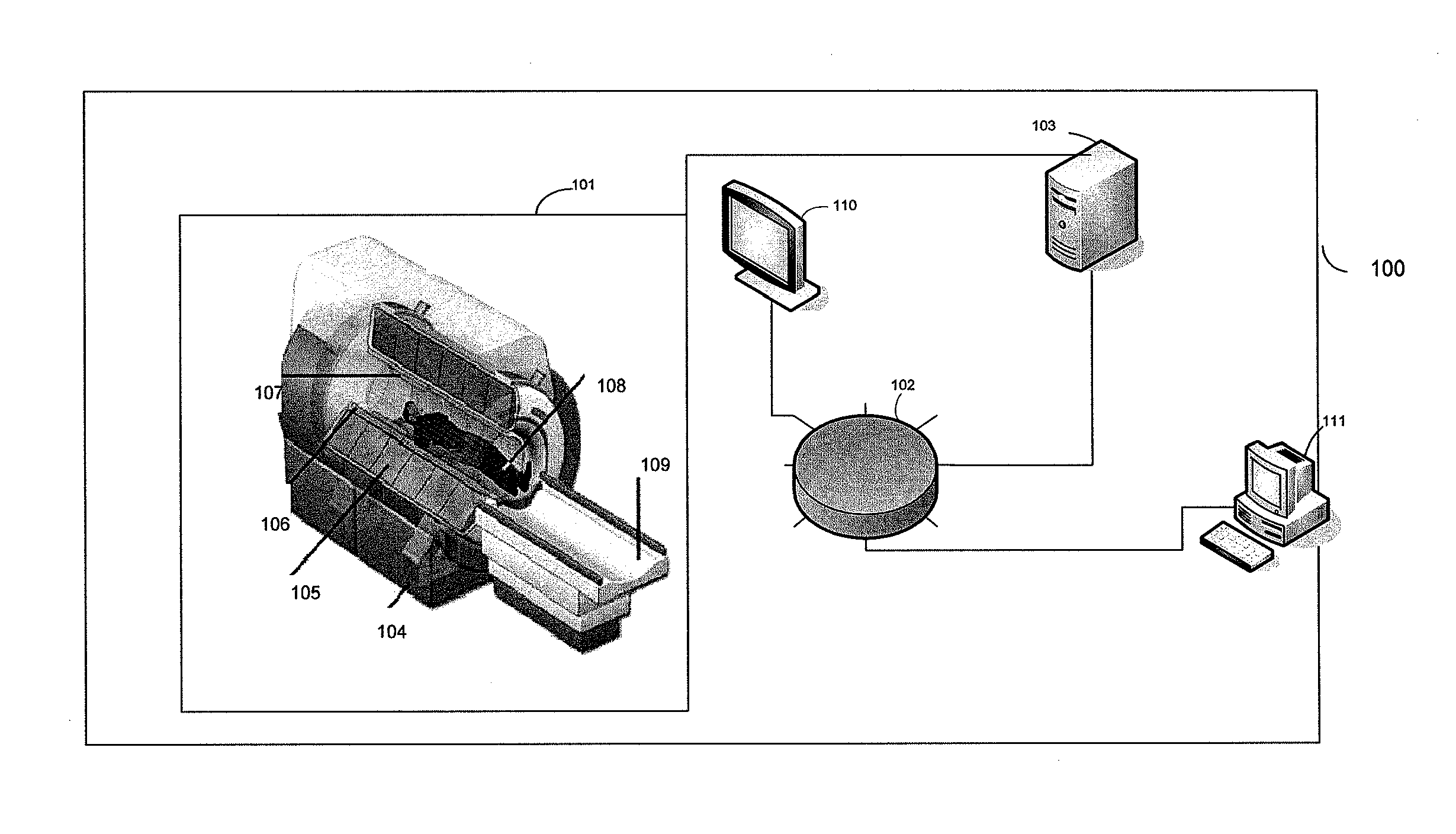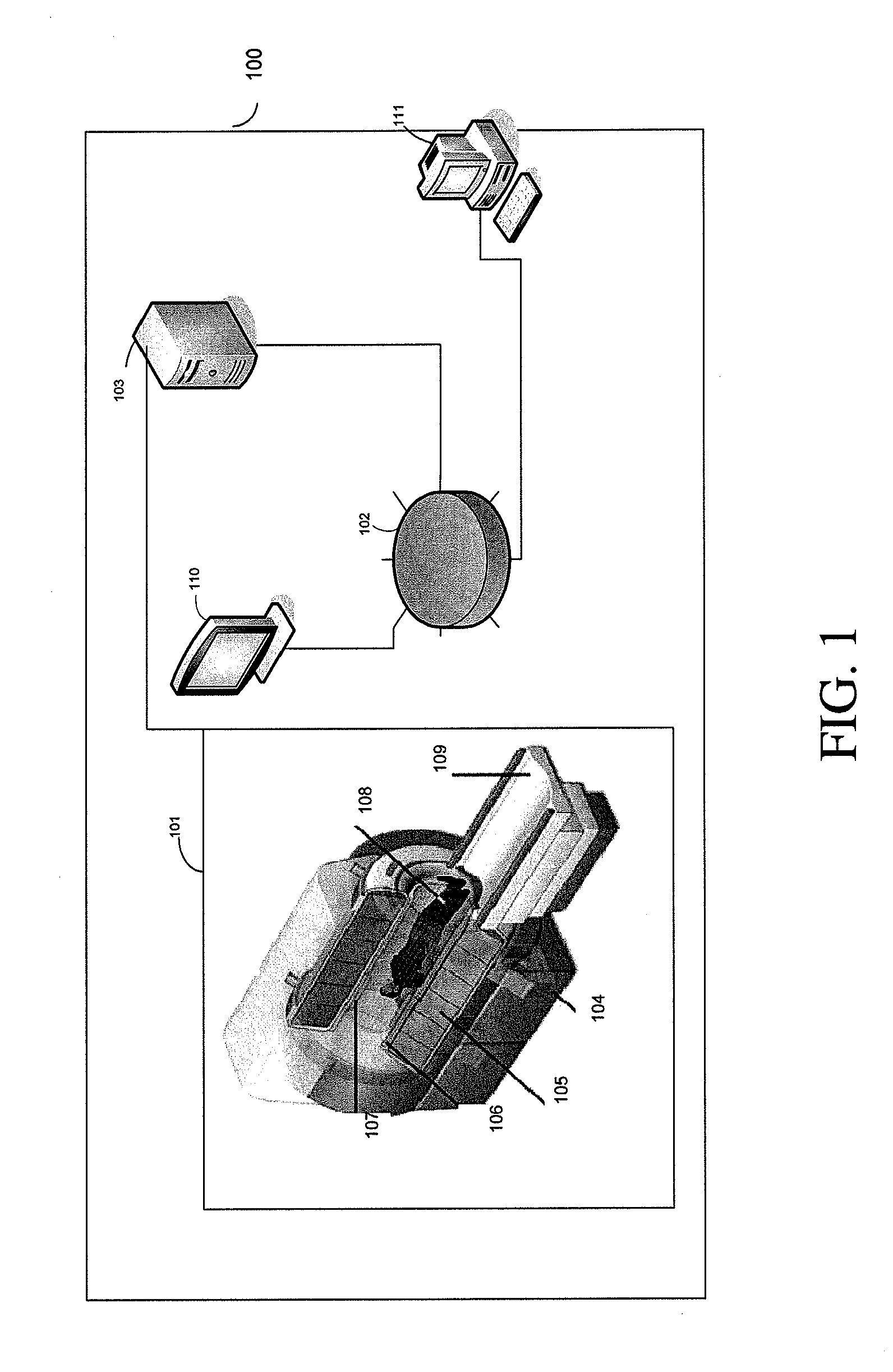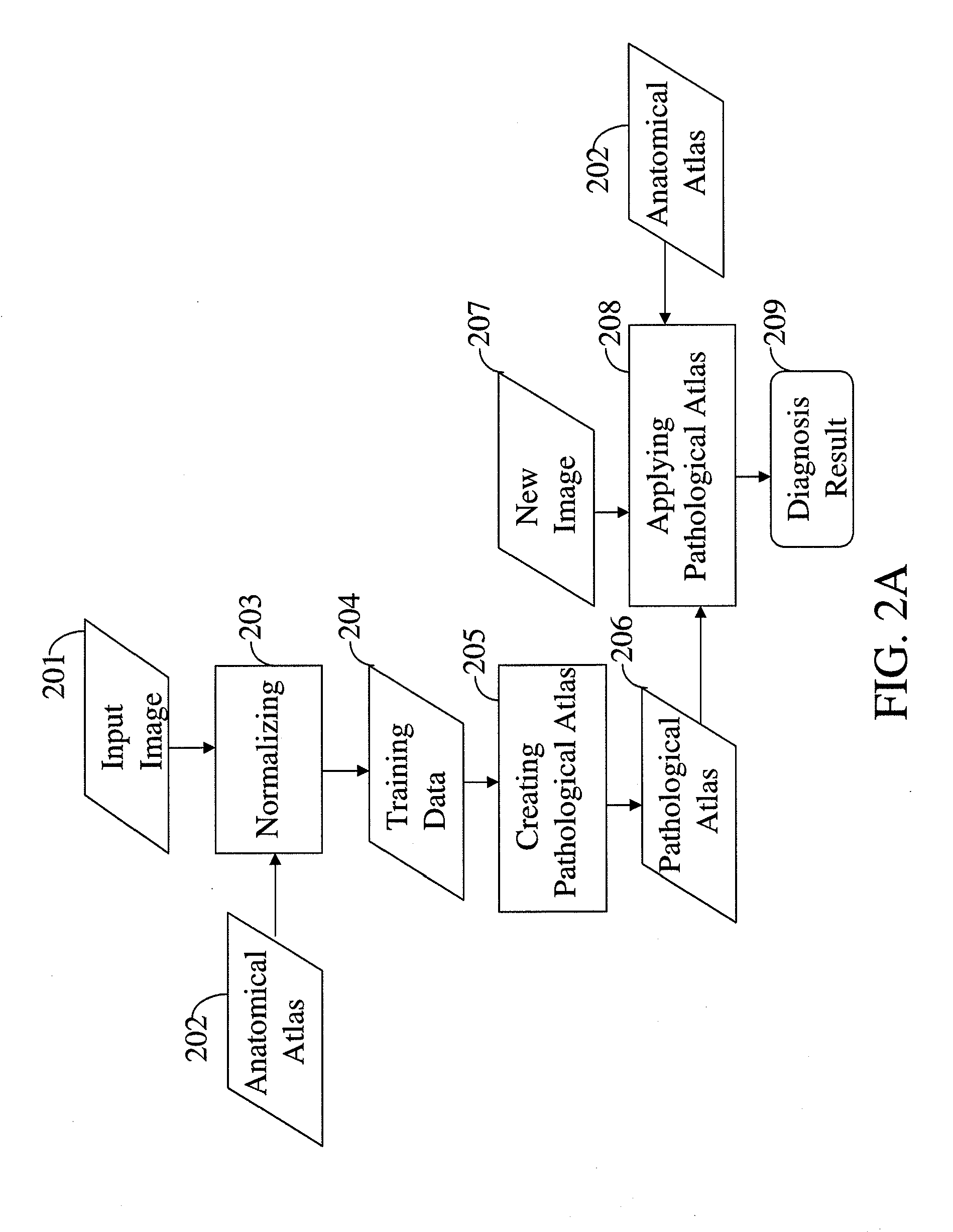Intelligent Atlas for Automatic Image Analysis of Magnetic Resonance Imaging
- Summary
- Abstract
- Description
- Claims
- Application Information
AI Technical Summary
Benefits of technology
Problems solved by technology
Method used
Image
Examples
Embodiment Construction
[0020]Some embodiments of the current invention are discussed in detail below. In describing the embodiments, specific terminology is employed for the sake of clarity. However, the invention is not intended to be limited to the specific terminology so selected. A person skilled in the relevant art will recognize that other equivalent components can be employed and other methods developed without departing from the broad concepts of the current invention. All references cited herein are incorporated by reference as if each had been individually incorporated.
[0021]FIG. 1 is a schematic illustration of a non-invasive imaging system 100 according to some embodiments of the current invention. The non-invasive imaging system 100 includes an imaging scanner 101, a data storage unit 102, and a signal processing system 103. Imaging scanner 101 may be, but is not limited to, a magnetic resonance imaging (MRI) scanner, a computed tomography (CT) scanner, a positron emission tomography (PET) sc...
PUM
 Login to View More
Login to View More Abstract
Description
Claims
Application Information
 Login to View More
Login to View More - R&D
- Intellectual Property
- Life Sciences
- Materials
- Tech Scout
- Unparalleled Data Quality
- Higher Quality Content
- 60% Fewer Hallucinations
Browse by: Latest US Patents, China's latest patents, Technical Efficacy Thesaurus, Application Domain, Technology Topic, Popular Technical Reports.
© 2025 PatSnap. All rights reserved.Legal|Privacy policy|Modern Slavery Act Transparency Statement|Sitemap|About US| Contact US: help@patsnap.com



